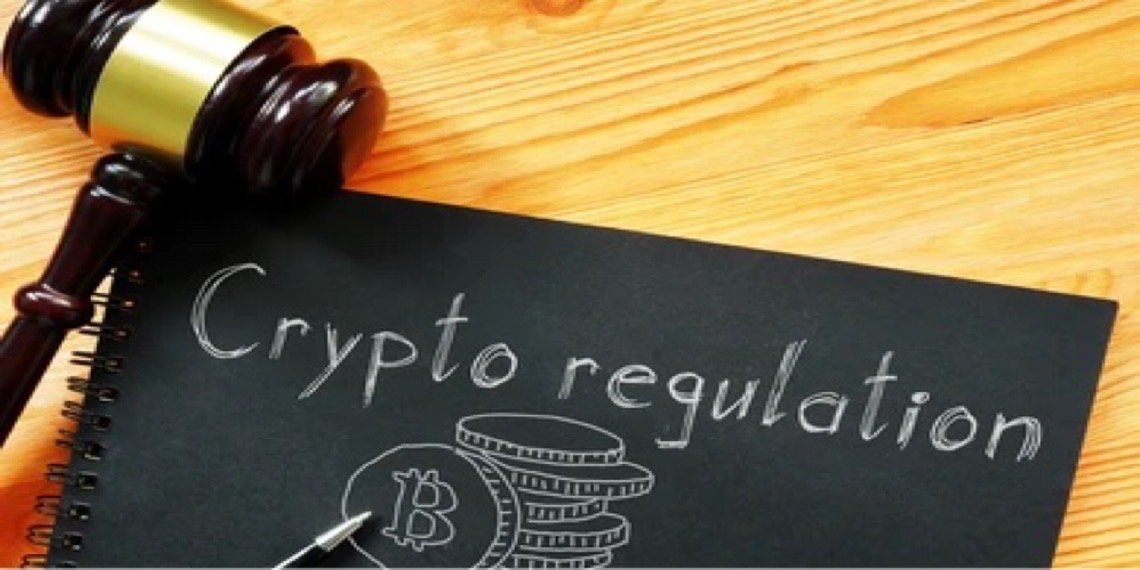
Stablecoin Bills Advance: How 2025 Could Transform Money, Banks, and Power
Congress is advancing the STABLE and GENIUS Acts—new stablecoin laws that could push trillions into U.S. Treasuries, disrupt banks, and make digital assets central to global finance. The stablecoin era isn’t speculation anymore—it’s policy.
Major legislative moves around stablecoin regulation are reshaping how Americans (and the world) might store and transfer money in the coming years. Lawmakers are advancing bills like the GENIUS Act and STABLE Act, signaling not just regulatory clarity but a shake-up in banking, government financing, and even geopolitical power. Could this spell a new era for payment stablecoins—and what surprises might be lurking for both banks and consumers?
Back in college, I remember struggling to keep up with late-night Econ debates about ‘the death of cash.’ Most of us rolled our eyes at bold claims. Fast forward to 2025: The U.S. Congress is debating stablecoin bills that aren’t just about ‘digital cash,’ but could force money out of banks, change how government debt is financed, and reorder global financial power. As American lawmakers align regulation, what looks like dull financial news could soon feel personal for everyone with a bank account. Let’s break down why this matters—and why so many people are suddenly glued to C-SPAN (for once).
Shockwaves on Wall Street: Stablecoins Disrupt the Banking Playbook
A seismic shift is underway on Wall Street as Congress advances stablecoin bills that could fundamentally disrupt the traditional banking system. Recent legislative pushes, including the GENIUS Act and the STABLE Act, are poised to move trillions of dollars from conventional banks into the rapidly growing US stablecoin market. As the world watches, lawmakers are preparing to trigger what some are calling “the largest cash transfer in history.”
The stakes are enormous. Banks now face what many insiders describe as a nightmare scenario: mass deposit outflows as customers flock to stablecoins—digital assets pegged to the US dollar and backed by one-to-one reserves in short-term Treasury bills. “
This could be the end of banks as we know it.
” The phrase, repeated by analysts and echoed across financial media, captures the scale of the threat. Stablecoins offer a low-cost, always-on alternative to traditional bank accounts, allowing users to move money instantly and globally, day or night.
Under the proposed federal regulatory framework, stablecoin issuers would be required to hold reserves fully backed by US Treasury bills with maturities under 93 days. This regulatory move, research shows, would not only ensure transparency and security for users but also tie every digital dollar directly to US fiscal policy. In effect, millions of stablecoin users would become micro-lenders to the federal government—often without realizing it.
Treasury Secretary Scott Bent has voiced strong support for these regulations, arguing that stablecoins will “
strengthen the dollar status as a dominant reserve currency
The logic is clear: as stablecoins gain legitimacy and adoption, demand for US Treasuries could soar. Some estimates point to a potential $2 trillion influx into Treasuries from stablecoin reserves over the next few years, a figure that would make stablecoin users among the largest holders of US government debt by 2030.
But the implications go far beyond government finance. Studies indicate that payment stablecoins legislation could spark a dramatic shift in consumer behavior. Americans—and users worldwide—may soon opt for “stable” digital assets over traditional bank accounts, especially if Congress passes these bipartisan bills. The result? A possible bank run of unprecedented scale, as depositors seek the safety, speed, and transparency of regulated stablecoins.
This legislative momentum is not happening in a vacuum. The European Union’s MiCA regulation, which takes effect in mid-2024, sets a similar precedent by requiring full reserves and transparency for stablecoins. In the US, the GENIUS Act and STABLE Act both mandate one-to-one reserves and regular audits, aiming to protect consumers and clarify the legal status of stablecoins. The shift is unmistakable: Congress is moving payment systems away from banks and toward transparent, digital assets.
As the stablecoin bills Congress debate heats up, Wall Street is bracing for a new era—one where the lines between banks, digital assets, and government finance are redrawn in real time. The “great monetary reset” may be closer than anyone imagined.
Political Chess: Why Lawmakers (and the Treasury) Are Betting on Stablecoins
Congress is not just regulating digital assets—it’s orchestrating a new way to fund U.S. deficits, and stablecoins are at the heart of this strategy. As Payment stablecoins legislation like the GENIUS Act and STABLE Act House advances, lawmakers are quietly turning stablecoin holders into de facto buyers of U.S. government debt. The requirement for stablecoin issuers to hold only short-term Treasury bills (T-bills) as reserves is poised to redirect billions, if not trillions, in private capital directly into government coffers.
This is not just about financial innovation. It’s about plugging a gaping hole in the federal budget. As one strategist put it,
“Congress is finding a new creative way for people to back something that looks to be spiraling out of control.”
The U.S. deficit is projected to keep climbing, and estimates suggest that stablecoin adoption could generate over $2 trillion in new Treasury demand in the coming years.
The GENIUS Act and STABLE Act House are engineered to clarify federal and state powers, while minimizing the risk of illicit finance through regular audits and transparency demands. Both bills set clear Stablecoin issuer requirements: reserves must be held one-to-one in high-quality, low-risk assets—specifically, T-bills with maturities under 93 days. This is a marked shift from the current banking system, where deposits are backed by a mix of treasuries, notes, and bonds.
What’s at stake? If these laws pass, Americans—and investors worldwide—could move funds out of traditional banks and into stablecoins, triggering what some analysts warn could be a historic “bank run” as people seek what they perceive as a more stable, reliable alternative. The promise of low-cost, 24/7, borderless dollar payments make stablecoins attractive for trade, remittances, and global settlements.
But the real story is political. Bipartisan support for Payment stablecoins legislation signals a major shift: regulated crypto is now mainstream policy, not a fringe experiment. Lawmakers see stablecoins as a way to sustain government financing without the political pain of spending cuts. As one observer noted,
“A stable coin regulation could shake up the US financial system.”
This isn’t just an American story. As the U.S. moves forward, Europe’s MiCA regulation stablecoins framework—effective mid-2024—already requires full reserves and transparency, setting a global standard for compliant stablecoins. MiCA excludes central bank digital currencies but allows regulated financial institutions to issue or support stablecoins, providing a compliant legal framework for banks and businesses across the continent.
Research shows that the federal regulatory framework is explicitly designed to channel stablecoin assets into government-backed debt, aligning with European rules to keep U.S. finance competitive and secure. Stablecoin regulation is no longer an isolated crypto experiment—it’s a linchpin in America’s fiscal strategy, with global finance watching closely as digital assets become a tool to shore up legacy systems.
Risk, Reality, and the Specter of a Digital Bank Run
Stablecoins promise a new era of 24/7, low-cost, borderless payments—an innovation that could transform remittances, global trade, and mainstream financial adoption. But as the U.S. Congress pushes forward with stablecoin bills, the conversation is shifting from opportunity to risk. The question on regulators’ minds: could stablecoins, if widely adopted, trigger a digital version of the old-fashioned bank run?
The collapse of Terra USD in 2022 remains a cautionary tale. As one source put it,
‘The collapse of one stable coin, Terara USD, in 2022 caught the attention of Bent’s predecessor, Janet Yellen.’
The event exposed how quickly confidence in digital assets can evaporate, sending shockwaves through global finance. Yellen, echoing concerns that have haunted banking for centuries, warned that stablecoins present ‘the same kind of risk that we’ve known for centuries in connection with bank runs’.
Unlike traditional banks, stablecoin issuers are now required—under both proposed U.S. legislation and the European MiCA regulation—to hold one-to-one reserves and submit to regular audits. These consumer protections for stablecoins, along with bankruptcy protections, are designed to prevent the chaos of mass withdrawals. Research shows that regulatory clarity in crypto, especially clear stablecoin issuer requirements, is expected to encourage more banks and businesses to participate in the market. Still, as the transcript notes, “most people won’t realize they’re backed by T-bills,” raising doubts about whether consumers will care what’s backing their digital dollars.
The specter of a digital bank run remains. JP Morgan analysts have flagged that, in times of stress, there could be a sudden run toward stablecoins—potentially draining deposits from traditional banks. The risk is not just theoretical. If Americans and global consumers flock to stablecoins as they might to a Black Friday sale, banks could find themselves scrambling to stay relevant. As one observer put it,
‘If all of a sudden we see the US government get behind it, what you could see is a mass exodus, a bank run of large proportions.’
The regulatory landscape is evolving. The STABLE Act and GENIUS Act in the U.S. both require stablecoin issuers to maintain full reserves and publish regular audits, aiming to provide consumer and bankruptcy protections stablecoins have lacked. The MiCA regulation stablecoins framework in Europe, effective mid-2024, further enforces transparency and reserve requirements, though it notably excludes central bank digital currencies. These moves are intended to bring regulatory clarity to crypto and set clear stablecoin issuer requirements.
Yet, as studies indicate, consumer awareness and confidence remain wildcards. The promise of instant, borderless payments is matched by very real risks—especially if trust in the system breaks down. Old fears find new life in the digital age. A system designed for stability could, if mismanaged or misunderstood, unleash the very financial chaos it seeks to prevent.
- Stablecoin reserves must be reported monthly under upcoming regulations.
- Mandatory one-to-one reserves and full audits are now the cornerstone of new protections.
- Regulatory clarity is expected to bring more banks and businesses into the stablecoin ecosystem, but legacy risks persist.
The New Normal? Why Everyone Will Soon Know (and Care) About Stablecoins
The regulatory landscape for stablecoins is shifting at a pace that few could have predicted just a few years ago. As 2025 approaches, the once-niche world of digital dollars is rapidly colliding with the mainstream, promising to reshape not just how people pay, but how banks, governments, and even global markets operate. Research shows that stablecoin participation is set to explode, changing the very definition of “money in the bank.”
What’s driving this transformation? A wave of bipartisan momentum in Congress, with bills like the STABLE Act and GENIUS Act aiming to create a comprehensive regulatory framework for stablecoins. These proposals require issuers to hold one-to-one reserves, undergo regular audits, and offer consumer protections. The goal: to make stablecoins as safe and transparent as possible, while giving banks and businesses the legal certainty they need to participate. Europe is moving in parallel, with the MiCA regulation setting clear rules for stablecoins and opening the door for regulated financial institutions to get involved.
But the implications go far beyond compliance. If all goes to plan, payment stablecoins could quietly underwrite future government spending, leave banks fighting for relevance, and force digital assets into daily conversation—from Congressional hearings to dinner-table debates. As one analyst put it,
‘Stablecoin users could be one of the largest holders of US treasuries by 2030.’
That’s not just a headline—it’s a seismic shift in who finances government debt and how the global financial system is structured.
For consumers and businesses, this means stablecoins are poised to become a household necessity. Backed by U.S. Treasuries, they offer a blend of yield and stability that traditional banks are struggling to match. The reality, as discussed in recent hearings, is that most people won’t even realize they’re indirectly buying T-bills when they use stablecoins. Yet, the impact will be felt everywhere—from the way people manage their finances to how governments fund deficits.
Of course, there are risks. The collapse of TerraUSD in 2022 was a stark reminder that not all stablecoins are created equal. Regulators warn that a surge in stablecoin adoption could trigger new forms of financial instability, especially if banks lose deposits to digital alternatives. As JP Morgan’s analysts note, a “run” toward stablecoins in times of stress could upend the traditional banking model. The Strategic Playbook Banks must now draft is more urgent than ever.
Still, the momentum is undeniable. Fintech, fiscal policy, and banking are converging fast—this is financial innovation made real, not just Silicon Valley hype. As compliance becomes the norm, expect stablecoins to move from crypto curiosity to core infrastructure. Maybe, just maybe, those late-night debates about the death of cash weren’t so wild after all. By 2025, Stablecoins in 2025 may be less about speculation and more about survival—for banks, for governments, and for anyone who cares about the future of money.
TL;DR: Congress is fast-tracking stablecoin regulation through bills like the STABLE and GENIUS Acts. Expect new rules for issuers, potential disruptions for banks, and a seismic shift in money movement, government financing, and digital asset adoption. The stablecoin era is nearly here.
StablecoinRegulation2025, USStablecoinMarket, FederalRegulatoryFramework, PaymentStablecoinsLegislation, GENIUSAct, STABLEActHouse, StablecoinBillsCongress, StablecoinIssuerRequirements, RegulatoryClarityCrypto, One-to-oneReserves,stablecoinbillsCongress2025, STABLEActandGENIUSAct, digitaldollarregulation, bankrunriskstablecoins, U.S.Treasury-backedstablecoins
#Stablecoins2025, #CryptoRegulation, #DigitalAssetLaw, #USFinance, #FEDUpdates, #BankingTransformation, #GENIUSAct, #STABLEAct, #StablecoinRevolution, #FinanceNews,#Stablecoins, #DigitalDollar, #CryptoRegulation, #USDebt, #BankingReform

